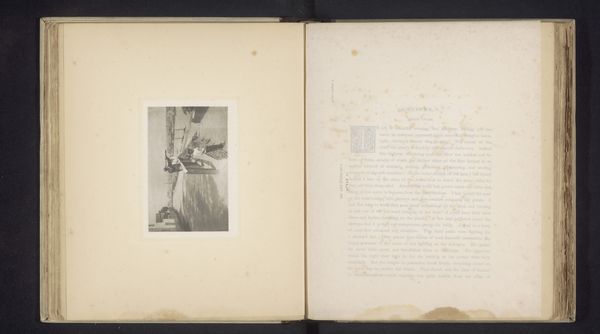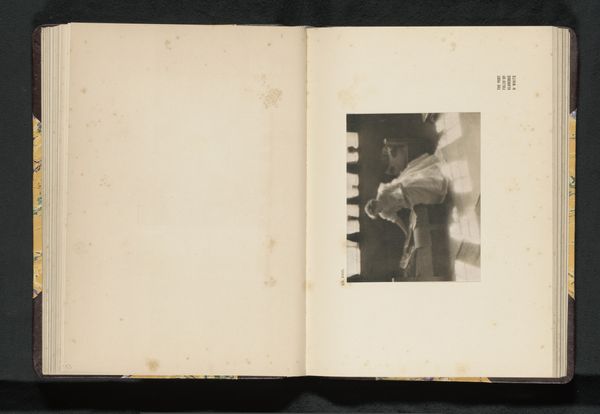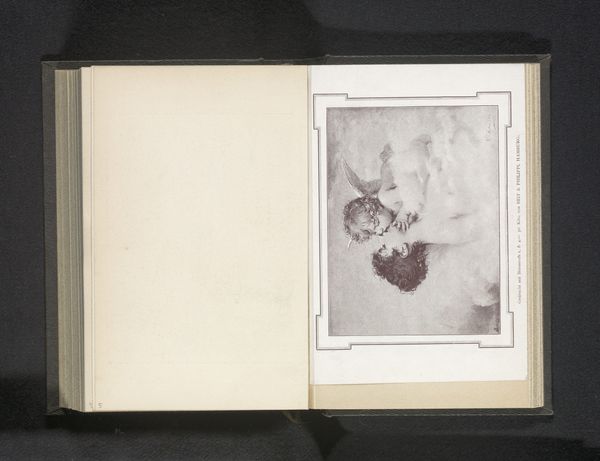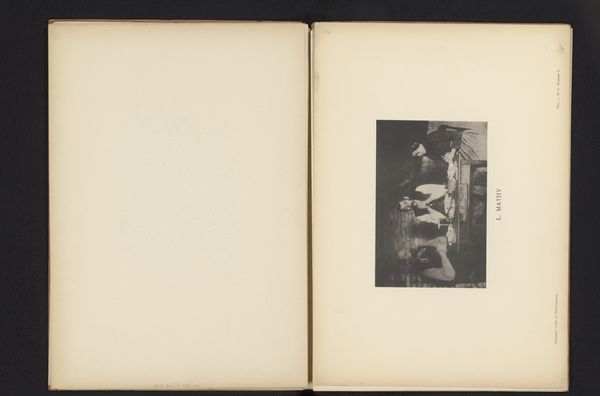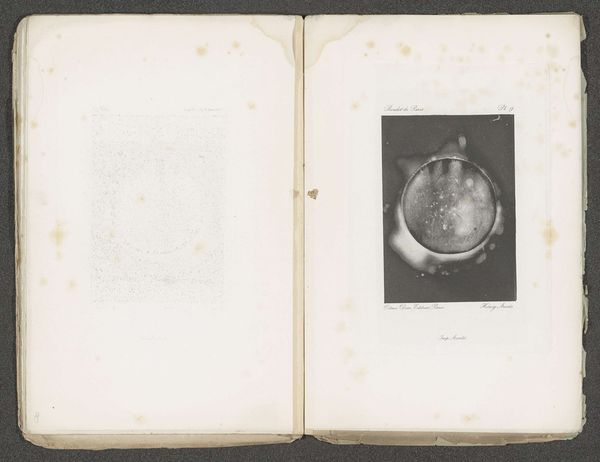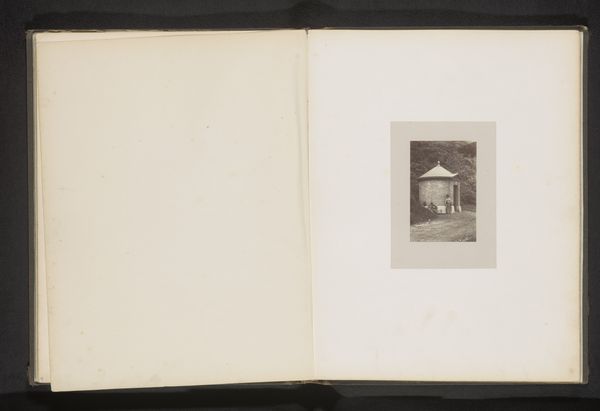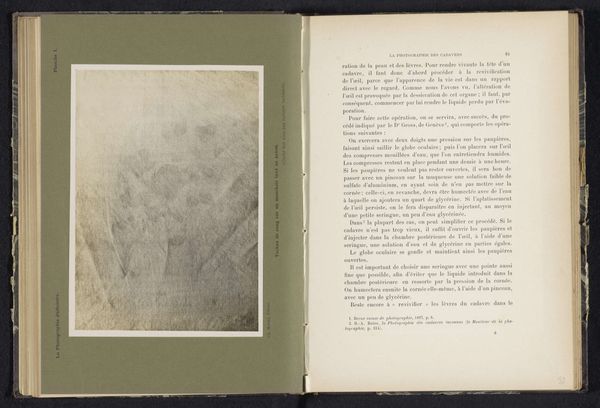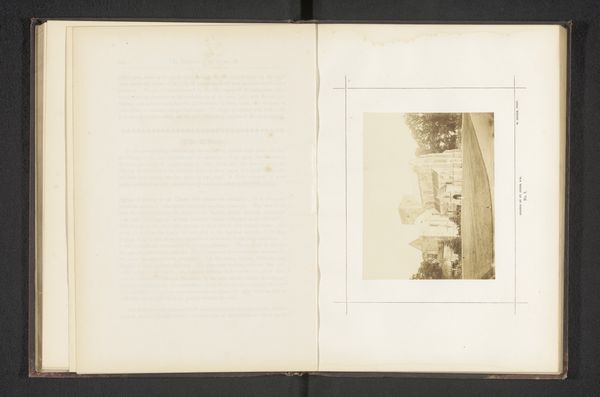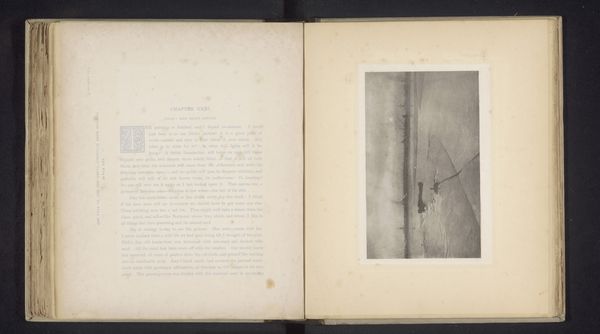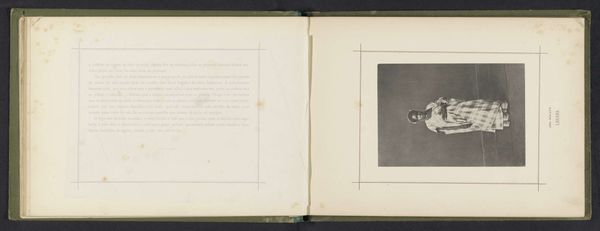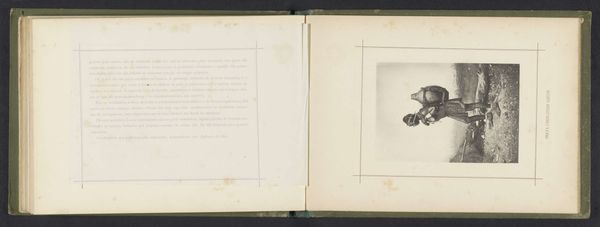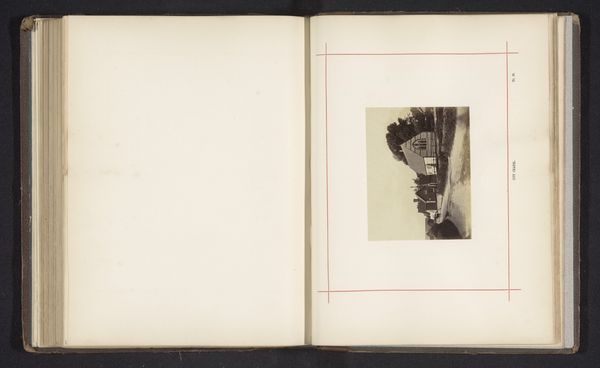
drawing, paper
#
portrait
#
african-art
#
drawing
#
aged paper
#
homemade paper
#
script typography
#
sketch book
#
hand drawn type
#
personal journal design
#
paper
#
personal sketchbook
#
hand-drawn typeface
#
thick font
#
historical font
Dimensions: height 166 mm, width 98 mm
Copyright: Rijks Museum: Open Domain
Curator: We’re looking at “Kruier uit Bailundo,” a drawing completed before 1886 by José Augusto da Cunha Moraes. It appears to be a page from a sketchbook. Editor: The immediate feeling is one of stark contrast—light paper versus the dark figure of the subject. A bearer of some kind, the human figure bent under a heavy load… what can you tell us about the materials here? Curator: Given the time period, we are likely viewing handmade paper. There are clear signs of aging in the material, lending to the artwork’s historical character. The drawing itself seems executed with graphite or a similar material, lending a softness to the overall image. And look closely—script typography alongside, another handmade element revealing process. Editor: The figure is powerful, even burdened. Look at the angle of the neck, the lines of stress – the symbolism of labour, I’d say, as a defining aspect of human experience, specifically in its relationship to place. What meaning would "Kruier" have to people of Bailundo? Curator: Given the context, “Kruier,” or bearer, in Bailundo speaks to the colonial systems of labor at the time. Consider the artist's background as a lens through which we are viewing this— what position did he occupy and how does this mediate our perception of subject? Editor: I think the symbolism also hinges on how "weight" is communicated – the physical load is obvious but I see a deeper kind of historical, and even psychological weight being carried by the figure’s entire posture. A community's aspirations perhaps are contained in what the "Kruier" literally is asked to support on his shoulders? Curator: The placement in the sketchbook is crucial—juxtaposition of text and image gives further material insights. What does it mean that Da Cunha Moraes captured this particular image within his body of work? The handmade elements lend to an intimate, anthropological perspective. Editor: Agreed, these kinds of drawings freeze-frame our feelings of memory; visual shorthands of burdens – seen and unseen. The "Kruier" remains an emblem that persists. Curator: It’s this emphasis on the physical act of sketching on material that moves us closer to an understanding of how Da Cunha Moraes, and those of Bailundo, operated within the larger network of resource, power, and manual labor. Editor: An image pregnant with layered symbols.
Comments
No comments
Be the first to comment and join the conversation on the ultimate creative platform.

